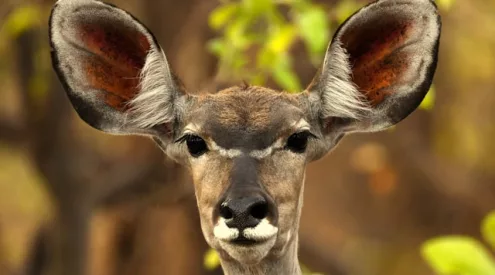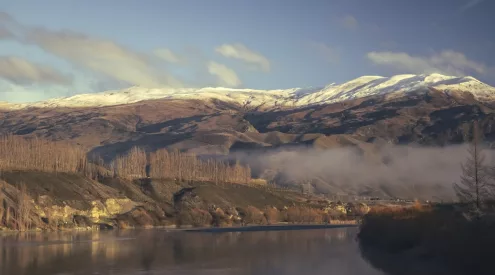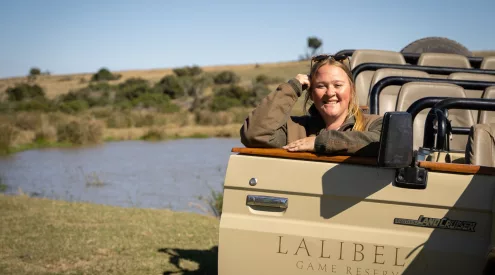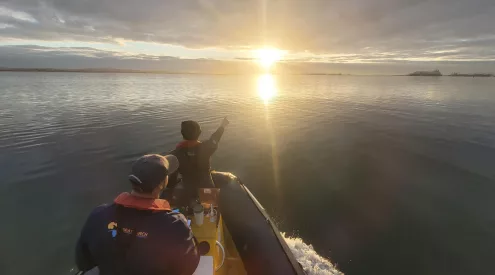There is hope for the vulnerable and endangered fin whale and mountain gorilla, according to the International Union for Conservation of Nature (IUCN)’s Red List which was recently updated.
Earlier this month, the IUCN issued an update to its Red List of Threatened Species, noting positive changes in numbers for both the fin and Western grey whale gleaned from population surveys, as well as an increase in the number of mountain gorillas. The Red List consolidates a biodiversity inventory and was updated by the Swiss-based organisation celebrating 70 years of research for conservation. The Red List is considered a ‘barometer of life’.
In a web news post, the organisation changed the status of the fin whale (Balaenoptera physalus) from Endangered to Vulnerable. This follows the positive spike in fin whale populations – there are now an estimated 100,000 adults. The fin whale is the second largest whale on earth and is so named because of its dorsal fin. According to the World Wildlife Fund (WWF) they can be found in the Arctic, in the Pacific Ocean near the Gulf of California and in the Coral Triangle in the western Pacific.
The western grey whale (Eschrichtius robustus) is also experiencing population growth, and has been moved from the Critically Endangered list to the Endangered list. The western grey whale is also found mostly in the Arctic and Pacific Oceans. The IUCN update identifies five ‘range states’ whose commercial and industrial activities are known to have threatened the whales and their habitat in years past: Japan, Russia, South Korea, Mexico and the USA.
The positive population changes seen in this update are largely due to bans on commercial whale hunting – an industry harking back to the 1970s – as well as international policies and conservation efforts. ‘The delay between conservation measures taking effect and the detection of whale recovery is due, in part, to these animals’ slow rate of reproduction,’ the IUCN explained in the update.
Back on the African continent, the status of the mountain gorilla (Gorilla beringei beringei) has been updated from Critically Endangered to Endangered, with its population now above 1,000 – a welcome figure compared to that of a decade ago when the IUCN reported about 680 gorillas in existence.
As the name suggests, mountain gorillas enjoy a mountainous, forested habitat and, according to the WWF, are found predominantly in the Congo Basin. The species’ population growth is due largely to what the IUCN called ‘collaborative conservation efforts’.
Also read: The only gorilla tekking story you’ll ever need to read
The mountain gorilla’s habitat is now limited to two restricted areas with a combined area of 792 km² in Central Africa between the Democratic Republic of Congo (DRC), Rwanda and Uganda at Virunga National Park and the Bwindi Impenetrable Park in Sarambwe forest. Both parks are protected UNESCO World Heritage Centres.
Sadly, the other mountain gorilla subspecies, the eastern gorilla (Gorilla beringei), is still Critically Endangered. Both species have been threatened by civil conflicts, diseases and even poaching, the IUCN and WWF report.
Hear the victorious mountain gorilla cheer in a ‘sound card’ from the WWF. It’s a pretty cool take on your average greeting card:
Inger Andersen, IUCN Director General, said that ‘[the] update to The IUCN Red List illustrates the power of conservation action, with the recoveries we are seeing of the fin whale and the mountain gorilla … These conservation successes are proof that the ambitious, collaborative efforts of governments, business and civil society could turn back the tide of species loss.’
A little closer to home, the Eastern Cape’s Salt Marsh Gecko (Cryptactites peringueyi) is no longer Critically Endangered but ‘Near Threatened’.
The IUCN’s Red List update and corresponding video also remarks on species still under threat that now have an even higher threat status, including 54 fish species in Lake Malawi threatened by unsustainable industry fishing practices which have also impacted negatively on food security in the region.
‘Unfortunately, the latest update also underlines how threats to biodiversity continue to undermine some of society’s most important goals, including food security,’ says Andersen. ‘We urgently need to see effective conservation action strengthened and sustained.’


















